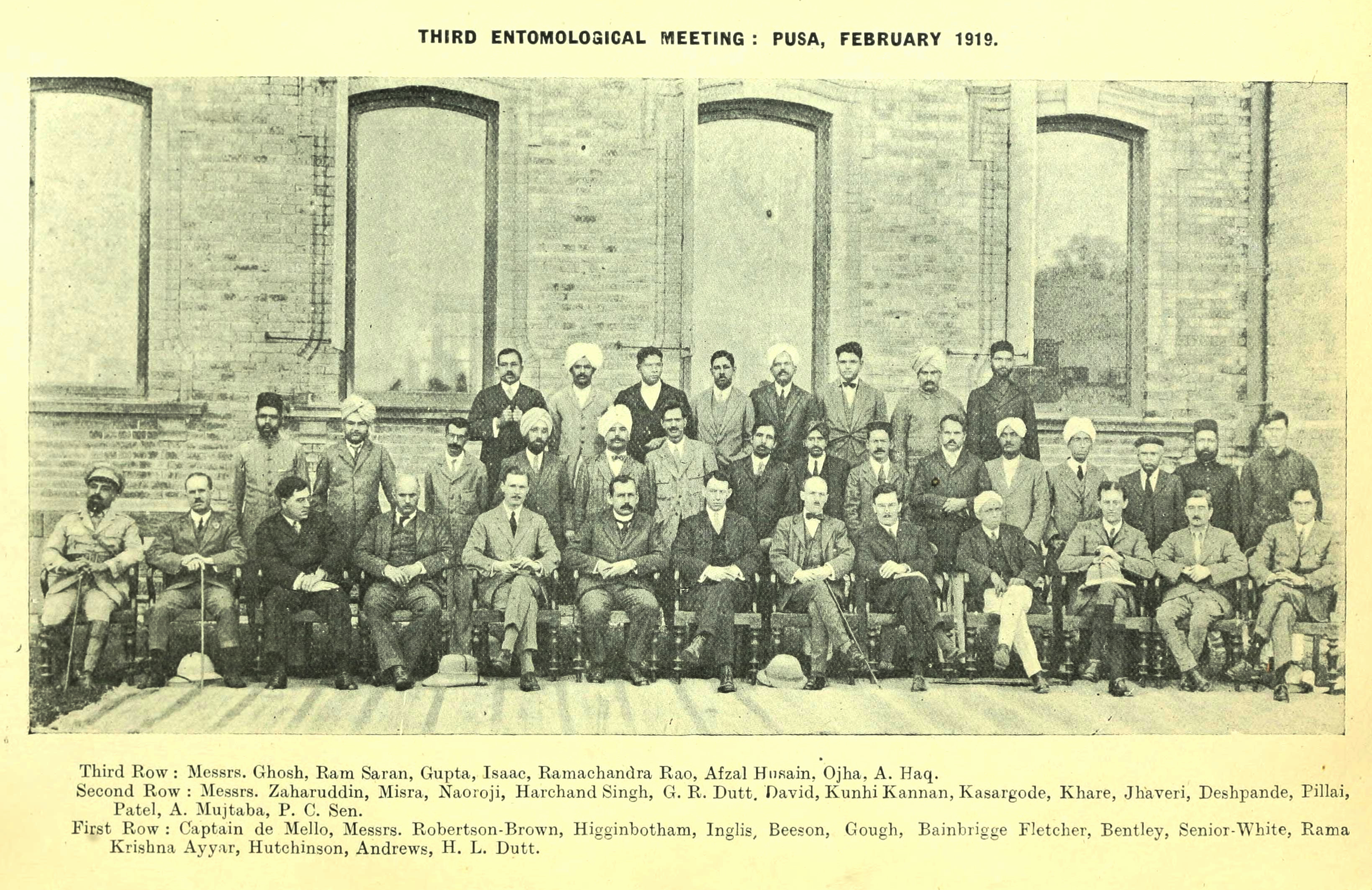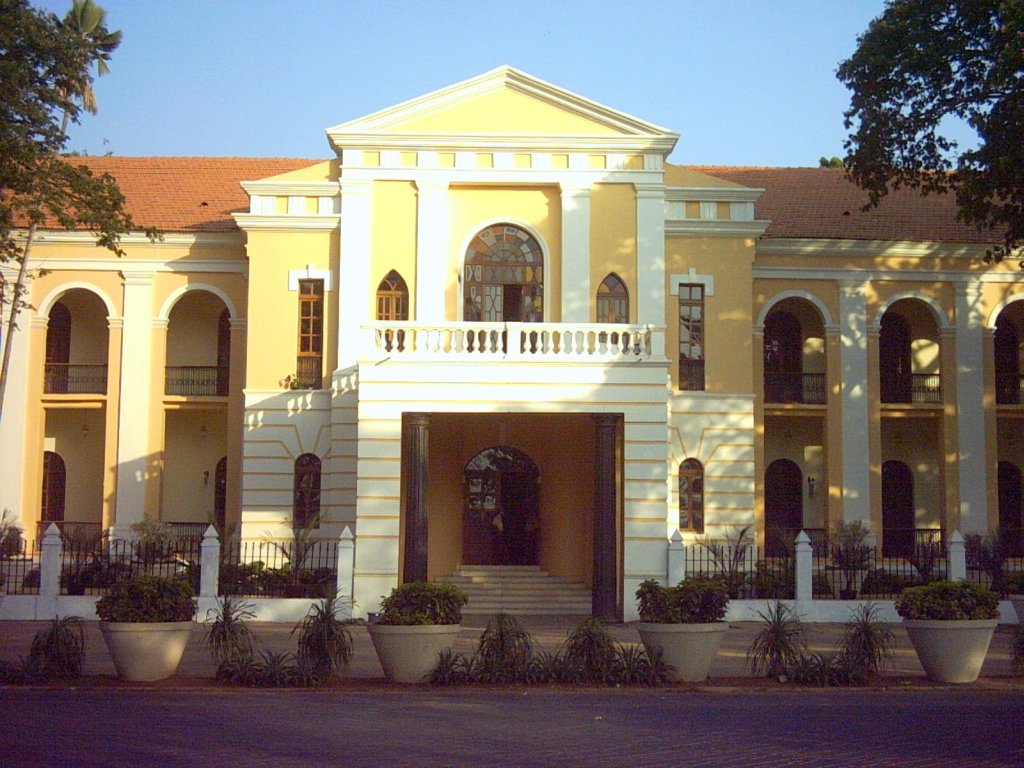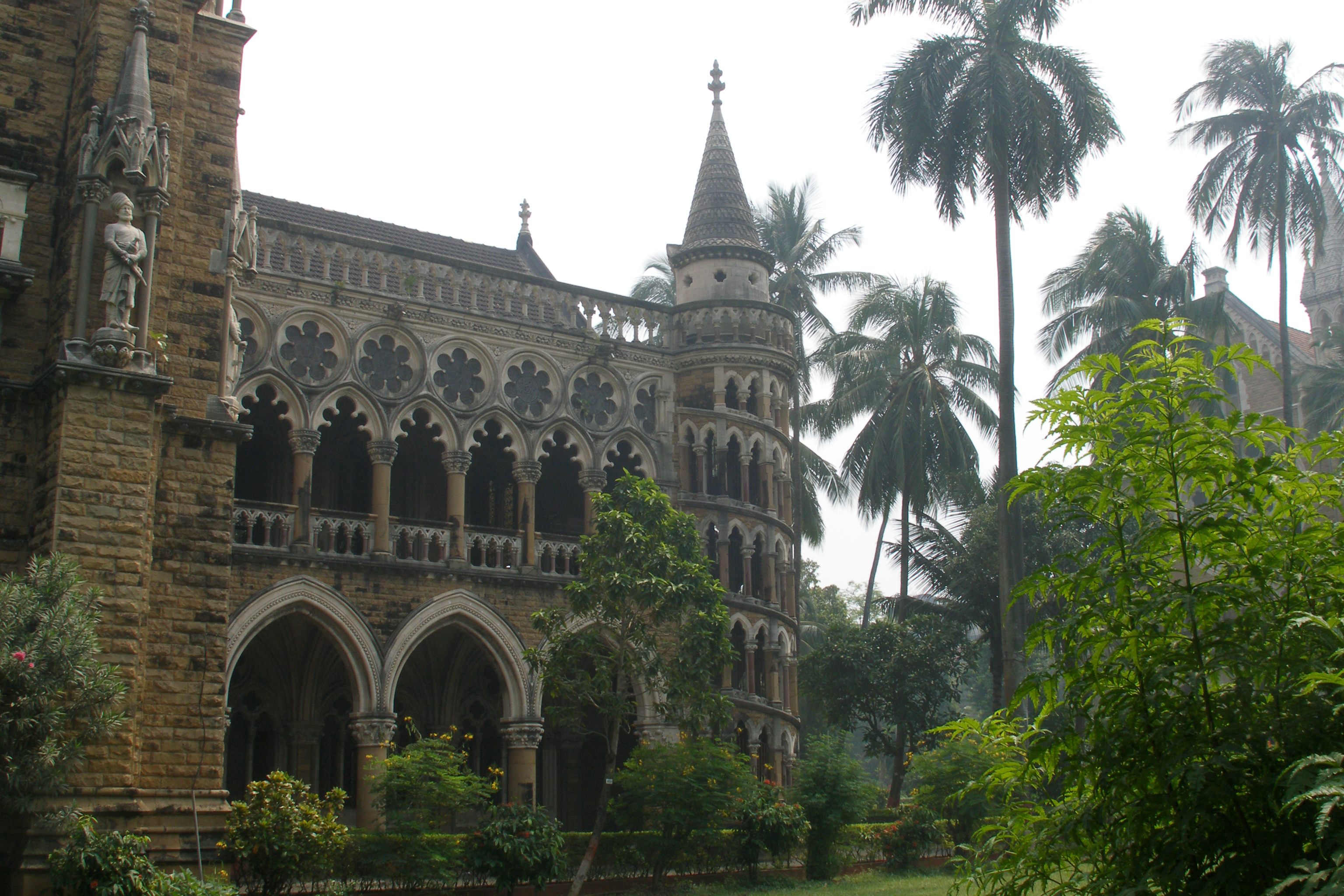|
Jaime Valfredo Rangel
Dr Francisco Newton João Vicente da Piedade Jaime Valfredo Rangel (13 February 1897 – 6 July 1959) was a Goan doctor, Director of Tipografia Rangel (Rangel Printing Press), President of the Municipal Council of Bardez (Mayor of Bardez) and a delegate to the International Labour Organization for Portugal. Throughout the course of his career as the owner and director of Tipografia Rangel, Rangel was responsible for the publication of thousands of books important to Portuguese Literature and Goan Literature and publication of Portuguese newspaper O Independente and the archives of Goa Medical College (then known as the ''Arquivos da Escola Medico Cirurgica de Nova Goa'') for which he was the editor. Tipografia Rangel was one of the first private printing presses in Portuguese India and was a leader in the publishing of Portuguese Literature in Portuguese India prior to the Annexation of Goa in 1961. Early life Jaime Valfredo Rangel was born in Bastora, Bardez, Goa to Goan Catho ... [...More Info...] [...Related Items...] OR: [Wikipedia] [Google] [Baidu] |
Bastora
Bastora is a village in North Goa, India. It is located on the outskirts of Mapusa town. Green and still scenic, this is one of the many communities and villages that makes up mainly-rural, but fast-urbanising Goa. Name and origins Bastora was earlier known as Bastodem, when it is believed to have been by the Kadamba and Vijaynagara dynasties that ruled the region. Like the rest of the region of Bardez came under Portuguese rule some 33 years after Lisbon conquered the region now known as Old Goa in 1510. Local landmarks Bastora was earlier home to St Xavier's College, which later shifted to Mapusa. It is also home to the Holy Cross School, and a prominent publishing and printing institution that played a key role in Goa's intellectual life for decades, Tipografia Rangel. It is now home to Asha Bawan a drug rehabilitation's home at Boa Vista. The SFS Institute bastora run by the Missionaries of St Francis de Sales is one of the older and prominent landmarks in the villag ... [...More Info...] [...Related Items...] OR: [Wikipedia] [Google] [Baidu] |
Goan Catholics
Goan Catholics ( gom, Goenchem Katholik) are an ethno-religious community of Indian Christians following the Roman Rite of worship from the Goa state, in the southern part of the Konkan region along the west coast of India. They are Konkani people and speak the Konkani language. Missionary activities followed soon after the Portuguese conquest of Goa as Pope Nicholas V had enacted the Papal bull of ''Romanus Pontifex'' in AD 1455, according to which the patronage for propagation of the Christian faith in the East Indies was granted to the Portuguese crown. Their culture is an amalgam of Konkani and Portuguese cultures, with the latter having a more dominant role because Goa, Damaon & Diu had been ruled by Portugal from AD 1510–1961. The notion of Goan identity as a distinct culture among other Luso-Asians or Luso-Indian cultures was forged into India after the annexation of Goa and Damaon in 1961. The Goan Catholic diaspora is concentrated in the Persian Gulf countrie ... [...More Info...] [...Related Items...] OR: [Wikipedia] [Google] [Baidu] |
Raj Kapoor
Raj Kapoor (pronunciation: �aːd͡ʒ kəpuːɾ born Shrishti Nath Kapoor; also known as Ranbir Raj Kapoor; 14 December 1924 2 June 1988) was an Indian actor, film director and producer, who worked in Hindi cinema. He is considered one of the greatest and most influential actors and filmmakers in Hindi Cinema. He is often referred to as ''The Greatest Showman of Indian Cinema''. He received multiple accolades, including three National Film Awards and 11 Filmfare Awards in India. The Filmfare Lifetime Achievement Award is named after Kapoor. He produced two films, ''Awaara'' (1951) and ''Boot Polish'' (1954), that competed for the Palme d'Or grand prize at the Cannes Film Festival. His performance in ''Awaara'' was ranked as one of the "Top-Ten Greatest Performances of All Time in World Cinema" by ''Time'' magazine. The Government of India honoured him with the Padma Bhushan in 1971 for his contributions to the arts. India's highest award in cinema, the Dadasaheb Phalke Award, ... [...More Info...] [...Related Items...] OR: [Wikipedia] [Google] [Baidu] |
Dekhni
Deknni (also spelled dekni, dekṇi, dekhṇi) is a semi classical Goan dance form. The plural of dekṇi in Konkani remains the same. Overview One of the earliest which may be dated around 1869 is ''Kuxttoba'' in which he is called "heir to India and terror of Goa", implying resistance to Portuguese rule. Kuxttoba was a member of the Salekar branch of the Rane family. Information about his birth, the reason and the course of his rebellion and the manner of his end are vague. He rebelled as an individual against the rule of the Portuguese in Goa but he presented no concept for a free Goa. One of the best known Deknni songs is ''Hanv Saiba Poltodi Vetam'' by Carlos Eugenio Ferreira (1860–1932) first published in Paris in 1895 and then in Goa in 1926 by Tipografia Rangel. The song was adapted by Raj Kapoor as ''Na mangoon sona chandi'' in his Hindi movie Bobby. The story that is depicted in this song is about two temple dancers who want to go for Damu's wedding and they approac ... [...More Info...] [...Related Items...] OR: [Wikipedia] [Google] [Baidu] |
Froilano De Mello
Indalencio Pascoal Froilano de Mello (17 May 1887 – 9 January 1955) was a Goan microbiologist, medical scientist, professor, author and an independent MP in the Portuguese parliament. During his scientific career, Mello was responsible for the discovery of thousands of protozoa, parasites and microbes which today bear the Latin names given by him, followed by his own surname. He served as mayor of Panjim from 1938–1945. During his tenure as an MP from 1945–1949, he represented the constituency of Portuguese India, namely its overseas provinces of Goa, Daman and Diu in the National Assembly at Lisbon. Early life Froilano de Mello was born in Benaulim, Salcette to Goan Catholic parents. He was the eldest son of the lawyer Constâncio Francisco de Mello, and Delfina Rodrigues, the daughter of Dr. Raimundo Venâncio Rodrigues. Rodrigues was the mayor of Coimbra, member of the ''Cortes Gerais'' in Portugal and one of the first directors of Goa Medical College (then known as ... [...More Info...] [...Related Items...] OR: [Wikipedia] [Google] [Baidu] |
Institute Menezes Braganza
Institute Menezes Braganza is a cultural institution set up by the Portuguese in colonial times, during the late 19th century. It was taken over by the Government of Goa and continues to play a role in cultural activities of Goa. In recent years, its takeover by the government was fought over in the Bombay High Court. History After being set up in 1871, by the then Portuguese government, initially named the Institute Vasco da Gama (IVG) functioned for a short while, and turned dormant for about five decades, between 1875 and 1925. At that time, the need for an institute focussing on literary, scientific and cultural themes was felt again by around 1924, and a new ''Portaria'' (provincial order 105 dated 10 February 1925 and ''Legislative Diploma'' or enactment No.144 of 26 March 1925 was passed. An annual grant of Rs.10,000 was given. Renamed Following the end of Portuguese rule in Goa in 1961 by Indian Army action, the institute was renamed after Luís de Menezes Bragança ... [...More Info...] [...Related Items...] OR: [Wikipedia] [Google] [Baidu] |
Parra, Goa
Parra is a village on the outskirts of Mapusa town Bardez sub-district, North Goa, India. It has traditionally been known as a village that has grown luscious watermelons. In recent times, the village is facing considerable urbanisation and social change. Location It is close to the town of Mapusa and the villages of Saligao, Calangute, Assagao, Anjuna and Vagator. Village church The Parra church is dedicated to St. Anne. According to José Lourenço, the Parra church, dedicated to St. Anne (Santa Ana or Santana), was built in 1649 and its feast is celebrated on the Sunday on or after July 26 each. year. By way of history, the rectorate of St Anne was established to cover the villages of Parra, Canca and Verla, all adjoining villages in the same locality. Earlier, the village was affiliated to the Nagoa Church, in another adjoining village. The first church was destroyed in 1683, but rebuilt with a vault in 1688. Its cemetery is said to have a "fine Rococo facade". This churc ... [...More Info...] [...Related Items...] OR: [Wikipedia] [Google] [Baidu] |
Panaji
Panaji (; also known as Panjim) is the capital of the Indian state of Goa and the headquarters of North Goa district. Previously, it was the territorial capital of the former Portuguese India. It lies on the banks of the Mandovi river estuary in the Tiswadi sub-district ''(tehsil)''. With a population of 114,759 in the metropolitan area, Panaji is Goa's largest urban agglomeration, ahead of Margao and Mormugao. Panaji has terraced hills, concrete buildings with balconies and red-tiled roofs, churches, and a riverside promenade. There are avenues lined with gulmohar, acacia and other trees. The baroque Our Lady of the Immaculate Conception Church is located overlooking the main square known as Praça da Igreja. Panaji has been selected as one of hundred Indian cities to be developed as a smart city under the Smart Cities Mission. The city was built with stepped streets and a seven kilometre long promenade on a planned grid system after the Portuguese relocated the capital from ... [...More Info...] [...Related Items...] OR: [Wikipedia] [Google] [Baidu] |
University Of Bombay
The University of Mumbai is a collegiate, state-owned, public research university in Mumbai. The University of Mumbai is one of the largest universities in the world. , the university had 711 affiliated colleges. Ratan Tata is the appointed head of the advisory council. History In accordance with "Wood's despatch", drafted by Sir Charles Wood in 1854, the University of Bombay was established in 1857 after the presentation of a petition from the Bombay Association to the British colonial government in India. The University of Mumbai was modelled on similar universities in the United Kingdom, specifically the University of London. The first departments established were the Faculty of Arts at Elphinstone College in 1835 and the Faculty of Medicine at Grant Medical College in 1845. Both colleges existed before the university was founded and surrendered their degree-granting privileges to the university. The first degrees awarded in 1862 were Bachelor of Arts and Licentiate in ... [...More Info...] [...Related Items...] OR: [Wikipedia] [Google] [Baidu] |
French Language
French ( or ) is a Romance language of the Indo-European family. It descended from the Vulgar Latin of the Roman Empire, as did all Romance languages. French evolved from Gallo-Romance, the Latin spoken in Gaul, and more specifically in Northern Gaul. Its closest relatives are the other langues d'oïl—languages historically spoken in northern France and in southern Belgium, which French ( Francien) largely supplanted. French was also influenced by native Celtic languages of Northern Roman Gaul like Gallia Belgica and by the ( Germanic) Frankish language of the post-Roman Frankish invaders. Today, owing to France's past overseas expansion, there are numerous French-based creole languages, most notably Haitian Creole. A French-speaking person or nation may be referred to as Francophone in both English and French. French is an official language in 29 countries across multiple continents, most of which are members of the ''Organisation internationale de la Francophonie'' ... [...More Info...] [...Related Items...] OR: [Wikipedia] [Google] [Baidu] |
Latin
Latin (, or , ) is a classical language belonging to the Italic branch of the Indo-European languages. Latin was originally a dialect spoken in the lower Tiber area (then known as Latium) around present-day Rome, but through the power of the Roman Republic it became the dominant language in the Italian region and subsequently throughout the Roman Empire. Even after the fall of Western Rome, Latin remained the common language of international communication, science, scholarship and academia in Europe until well into the 18th century, when other regional vernaculars (including its own descendants, the Romance languages) supplanted it in common academic and political usage, and it eventually became a dead language in the modern linguistic definition. Latin is a highly inflected language, with three distinct genders (masculine, feminine, and neuter), six or seven noun cases (nominative, accusative, genitive, dative, ablative, and vocative), five declensions, four verb conjuga ... [...More Info...] [...Related Items...] OR: [Wikipedia] [Google] [Baidu] |

.jpg)


